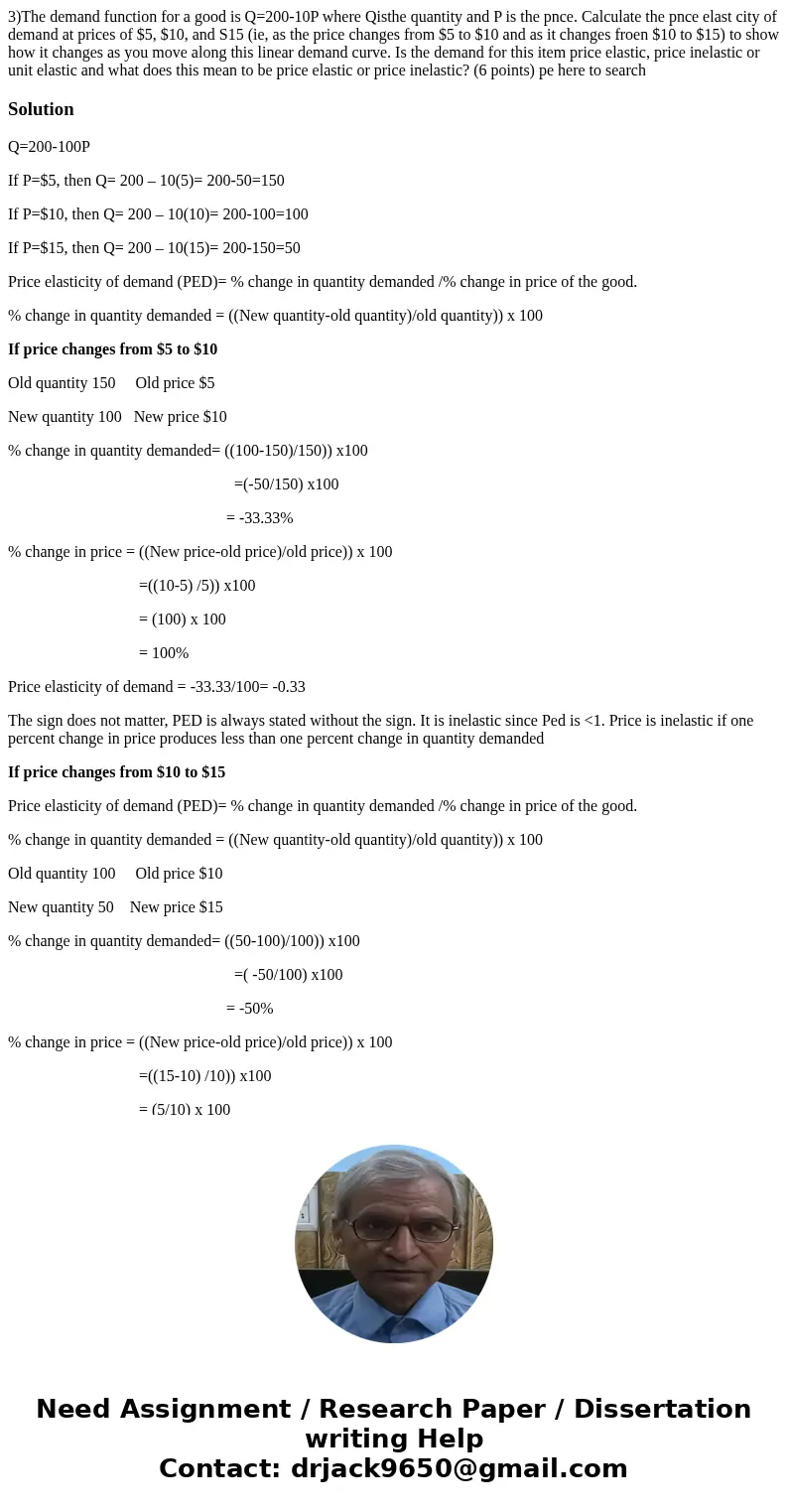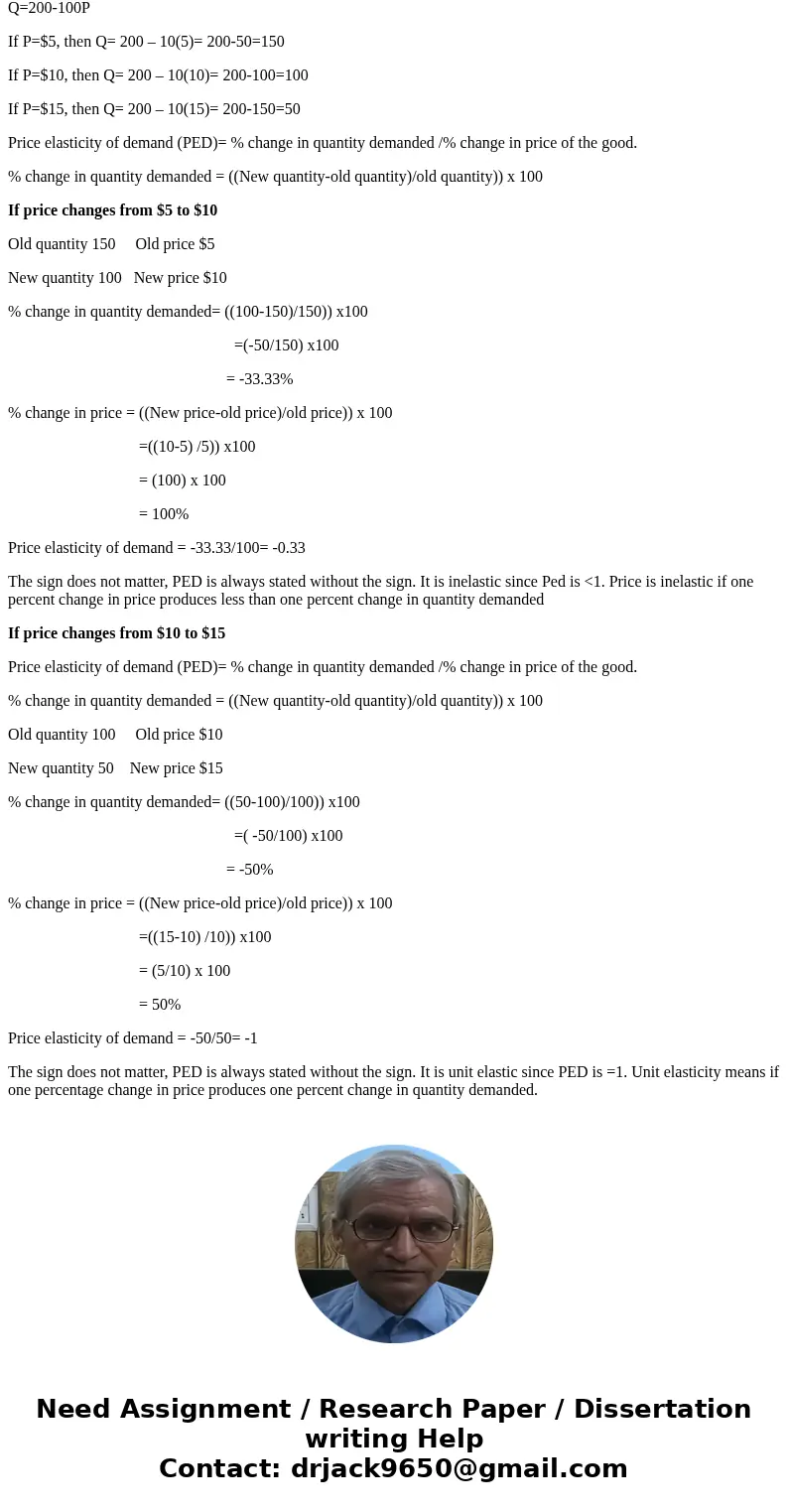3The demand function for a good is Q20010P where Qisthe quan
Solution
Q=200-100P
If P=$5, then Q= 200 – 10(5)= 200-50=150
If P=$10, then Q= 200 – 10(10)= 200-100=100
If P=$15, then Q= 200 – 10(15)= 200-150=50
Price elasticity of demand (PED)= % change in quantity demanded /% change in price of the good.
% change in quantity demanded = ((New quantity-old quantity)/old quantity)) x 100
If price changes from $5 to $10
Old quantity 150 Old price $5
New quantity 100 New price $10
% change in quantity demanded= ((100-150)/150)) x100
=(-50/150) x100
= -33.33%
% change in price = ((New price-old price)/old price)) x 100
=((10-5) /5)) x100
= (100) x 100
= 100%
Price elasticity of demand = -33.33/100= -0.33
The sign does not matter, PED is always stated without the sign. It is inelastic since Ped is <1. Price is inelastic if one percent change in price produces less than one percent change in quantity demanded
If price changes from $10 to $15
Price elasticity of demand (PED)= % change in quantity demanded /% change in price of the good.
% change in quantity demanded = ((New quantity-old quantity)/old quantity)) x 100
Old quantity 100 Old price $10
New quantity 50 New price $15
% change in quantity demanded= ((50-100)/100)) x100
=( -50/100) x100
= -50%
% change in price = ((New price-old price)/old price)) x 100
=((15-10) /10)) x100
= (5/10) x 100
= 50%
Price elasticity of demand = -50/50= -1
The sign does not matter, PED is always stated without the sign. It is unit elastic since PED is =1. Unit elasticity means if one percentage change in price produces one percent change in quantity demanded.


 Homework Sourse
Homework Sourse